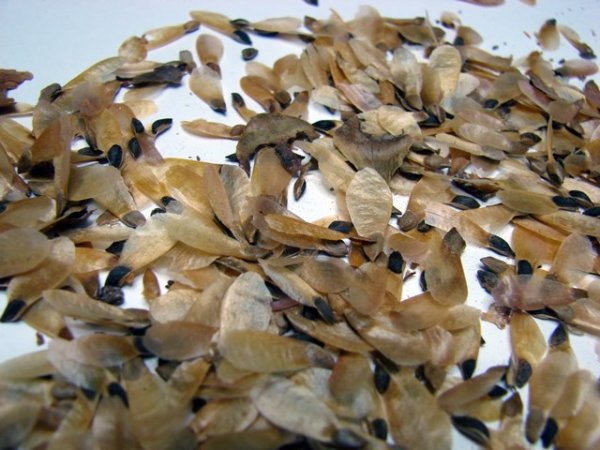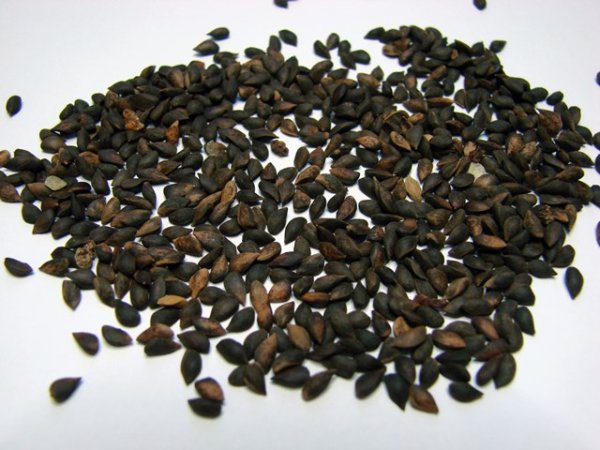Seed Stocks - the Foundation of Future Forests
The cold months of the year are a very busy time at JSC "Latvia's State Forests" (LVM) cone drying facilities, which produce high quality forest tree seeds that will be used to make forest tree seed stocks.
Seeds start their way in a plantation - a place where the best tree specimens are selected to produce the most productive and qualitative seeds for the planting of future forests. Pine tree plantations resemble orchards, since their crowns are rounded just like apple trees. In turn, in spruce tree plantations trees are trimmed to make cone harvesting easier.
After harvesting, cones are delivered to one of the LVM cone drying facilities in Renda, Kalsnava or the historic cone drying facility in Vijciems. Cones are then cleaned and dried at a temperature of 45 degrees until they open up. When the seeds come out of the cones, they are cleaned.
In the photo: raw spruce seeds
Seed are stored in LVM Kalsnava seed stock in a specially designed seed warehouse. In these facilities, the climate is specifically adapted to the needs of the material to be stored there - the future forest is stored in hermetically sealed containers in slight frost - at minus four degrees.
The seed stock for each forest tree species is different, and the decision as to when to collect these seeds and whether it is necessary is made every year. "The stocks change. In spring, part of the seeds is removed to produce seedlings from which the new forest will grow. The question of to what extent these stocks need to be replenished is always an issue. For example, in some cases it is decided not to collect pine cones and seeds in the plantations, but it is in our interest to obtain the best quality seeds. in case of pine trees, we work only with selected material, the stock of which has reached 4.99 tons. The stock has been provided for more than 15 years, and for this variety higher - grade 2 seeds with a genetic potential of +20% to + 25% are used. For comparison, the potential of grade 1 seeds is from 15% to 20%," says Guntis Grandāns, Director of "LVM Sēklas un stādi" (LVM Seeds and Plants).
In the photo: processed spruce seeds
Now the work focuses on the production of spruce seeds. "For historical reasons, the spruce has few plantations, but we are constantly working on creating new plantations. The new plantation in Rēzekne has started producing seeds; also in Vecumi near Žīguri we have already harvested the first crop. Now we can use the selected material there too," says Guntis Grandāns.
Several factors influence the production capacity of spruce trees. First of all, trees do not produce seeds if there is no stress, namely heat and drought, from the end of May until July, when the young shoots blossom out. "If the conditions are appropriate, they enhance formation of blossom germs, and then you can expect spruce trees to bloom next year. We experienced such situation in the spring of 2016, when in a number of places even planting works were stopped due to hot and dry weather. As a result, there were favourable conditions for spruce trees, and in the spring of 2017, after a period of 11 years, spruce trees finally bloomed," says Guntis Grandāns.
In the plantations where spruce trees are producing seeds, cones will be collected approximately until mid-March. The maximum amount of quality material will be collected, yet the full harvest will be visible later; however, currently all suggests that the harvest could be greater than expected. The current spruce seed stock is 3.47 tonnes, corresponding to the consumption of nine years.
The seed stock is intended for nurseries in Latvia as the basis for the yearly availability of seedlings for the restoration of Latvian forests. Some of these stocks are used for the production of seedlings at LVM "Sēklas un stādi" nurseries, but no seed leaves the territory of Latvia. Seedlings produced from foreign seeds are not planted in state forests because their quality is difficult to prove, and seedlings may turn out to be of poor quality or even harmful to the forest.




